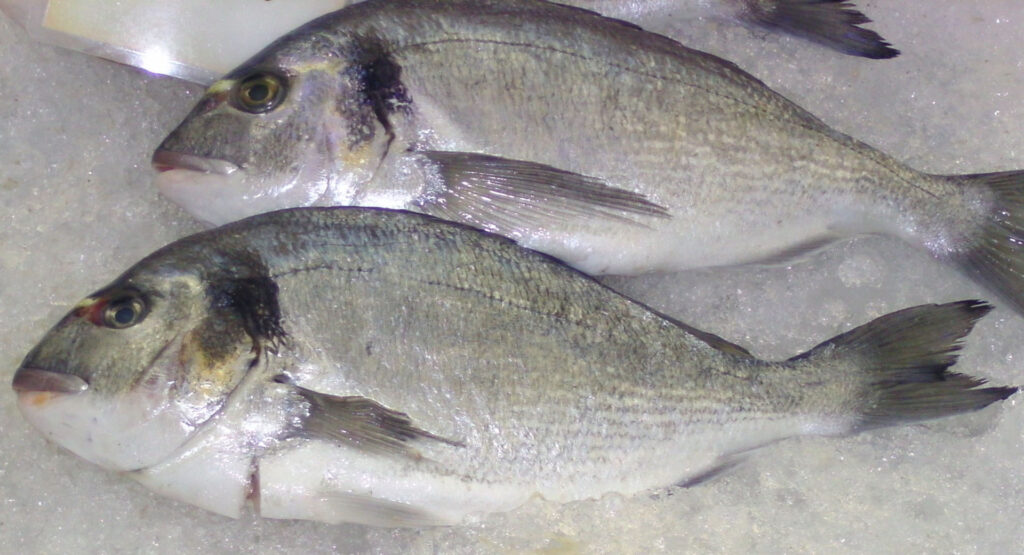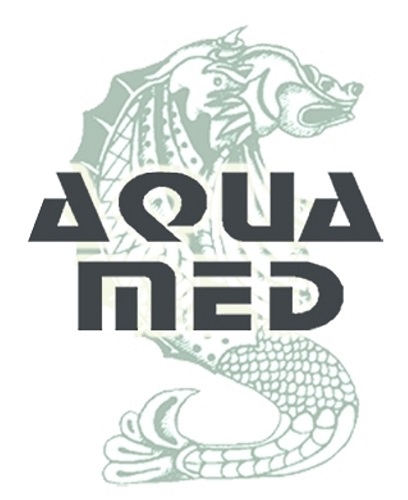aqua med
AQUA MED
APPLIED STUDIES & RESEARCH WORKS

APPLIED STUDIES
Aqua Med performed over 30 specialized feasibility, Economo-technical and application studies for the creation or modernization of fish farming projects, some of which are prototypes.
APPLIED RESEARCH WORKS
- “Marine fish hatchery operation manual”, 1996, including: Procedures for sea bream (Sparus auratus) larval rearing, procedures for sea bass (Dicentrarchus labrax) larval rearing, and finally, procedures for efficient utilization of the artemia (Artemia salina). Experience review: Most efficient marine fish hatchery operation techniques from several hatcheries around Europe were critically selected and codified in this manual.
- “Investigation of the size of esophagus in growing sea bass (Dicentrarchus labrax) and sea bream (Sparus auratus) from the stage of larvae to marketable size”. Field trials, testing of the feeding efficiency by the use of different sizes of extruded crumbles and pellets. Performed in: “Cephalonian Fisheries” S.A. hatchery and “Neptunus marine cultures” S.A. net cage on growing farm (1997-1998). Investigation resulted to formation of tables proposing size of dry diet according to size of the fish.
- “Growth of sea bass (Dicentrarchus labrax), sea bream (Sparus auratus) and striped bream (Diplodus puntazzo) in cage farming conditions with diets of different composition and caloric value. Parameters involved in growth and survival of the fish, over full production circles”. Growth and survival of cultivated sea bass and sea bream was measured from the size of 2 g to marketable of over 400 g. Fish were fed with dry extruded pellets of different composition and energy content. Most important environmental and farming parameters were monitored. Continuous comparisons of fish growth curves in different farms and different production cycles were interpreted and gave interesting results on the selection of the feed and the feeding of each species. This resulted to radical changes in the formulation of the feeds of Aller Aqua for sea bass and sea bream in year 2000. Similar field trials were applied for testing the efficiency of the new feed types. (1997-2003).
- “The Growth, feed uptake, conversion and survival of sea bream (Sparus auratus) and sea bass (Dicentrarchus labrax) with starter feeds containing immune stimulants. Advantages of feeding with different industrial extruded pellets, comparisons of results. Feed trials”. Series of sizable field trials held in the period 2003-2005 in two carefully selected cage marine farms in Greece. The two farming sites have a very different temperature and dissolved oxygen profile. Fry of sea bass and sea bream was fed from the beginning with starter diets with special composition, vitamin profile which contained glucans. Test fish populations were fed with different diets. Environmental and farming parameters were continuously monitored. Comparisons of growth, feed conversion and survival among the different fish groups led to very interesting conclusions. Test Farms were a/ Fragedis-Grammaticos Inc. Platia, Argolis, Greece and b/ Fortuna s.a. Sounion, Attica Greece.
- “A Statistical approach on the effect on growth and survival of young sea bass (Dicentrarchus labrax) fed on Aller Aqua diets with special formulation” – Filed trial (Cephalonia - Greece 2003-2006). A net cage sea bass farm suffering from seasonal fry mortalities was selected for testing special starter feeds. Feeds composition aimed to reduce stress of the fish and boost their immune system. Data’s from three consequent productions were compared.
- “The effect of feeding with dry pellets with different digestibility, energy content, amino- acid profile and lipid acid profile, on the condition factor, body composition and amino- acid and lipid-acid profiles of marketable sea bream (Sparus auratus)”. Field trial and laboratory analyses (Galaxidi Aquaculture S.A. fish farm, Galaxidi, Greece). Aim of the trial is to investigate the influence of the quality of proteins, lipids and total energy of the feed affects the condition, body composition and quality of protein and lipid of the fish, resulting to a differentiation of its taste. (2006-2007).
- “Monitoring of the Growth, Food Conversion and Survival of the Olive flounder (Paralichthys olivaceus) in marine tank farm in Jeju island, South Korea. Investigation of the effects of different feed types – extruded pellets of Aller Aqua and local moist pellets, fed according to feeding tables (extruded pellets) in recorded rations. Comparison of feeding efficiency”. April 2007-February 2008, test farm: Jeju Auaculture inc, Jeju Do, S. Korea, for AQUANET Co Ltd, Tong young city, Gyeong-nam, S. Korea.
-
“Monitoring of the Growth, Food Conversion and Survival on Red sea bream (Pagrus major) in a sea cage farm in South Korea. Investigation of the effects of different feed types – extruded pellets of Aller Aqua a/s and local moist pellets, fed according to feeding tables (extruded pellets) or according to farms routines (Moist pellets or trash fish) in recorded rations. Comparison of the efficiency of Extruder pellet feeds against trash fish”.
And:
“Improvement of the knowledge on the suitability of different extruded pellets, in the farming of the red sea bream”. Creation of prototype Feeding tables an routines for farming operation with high energy extruded pellet fish feeds.
May 2007-January 2008,
Test farm: Cheonbo Aquaculture Ltd, Tong Young, S. Korea,
For AQUANET Co Ltd, Tong young city, Gyeong-nam, S. Korea. -
“Monitoring of the Growth, Food Conversion and Survival on Black rockfish (Sebastes sp.) in a sea cage farm in South Korea”. Field trials Lim family cage farm in Mahung island (area of Tong Young – S. Korea). Set up of trial procedures, execution of trial for 3 months. Trial was terminated due to disease in the farm.
Preliminary feeding tables were created.
May 2007-August 2007.
Test farm: Machang aquaculture co, Machang island, S. Korea,
For AQUANET Co Ltd, Tong young city, Gyeong-nam, S. Korea. - On-site survey of the major fish farming areas of South Korea. Report on the situation of fish aquaculture in the country and evaluation of the overall situation for expansion of exports. Survey was in cooperation with the Royal Danish Embassy in Seoul, for the Danish Fish Feed manufacturer Aller Aqua a/s. in December 2007 (by special contract).
- Litterature review on the farming of the cobia (Rachycentron canadum), resulting to the creation of a theoretical business model for a vertically integrated fish farm in North East Brazil (November 2011-May 2012).
- On-site survey in the North-Eastern coast of Brazil, seeking appropriate areas for the feasible development of an offshore fish farm growing cobia and other marine tropical fish species (December 2011-February 2012). Documentation work on the selected areas. In cooperation with the Brazilian government (M.P.A. Ministry of fisheries and aquaculture)
- Review of the existing knowledge on the nutrition and growth of cobia, and aim for the development of industrial fish-feeds for the different stages of life of this species, in association with fish-feed factories from Europe. (MPA Brasilia, May 2012).
- On-site survey of the Fishmeal factories in Peru and possibilities of cooperation in the supply of raw materials for fish feed production (Lima, March 2013).
- Development of the prototype teamwork “an operation solution for three distressed assets, in the European aquaculture industry”.
- Review of the aquaculture sector in Greece and presentations in the lender banks who came to own the majority of the share capital of the largest Aquaculture companies (April-June 2015).
- Development of the prototype team work titled: “An operating solution for the reform of the business model for the three largest Greek aquaculture companies with distressed assets” on behalf of a foreign banking group (August 2015).

